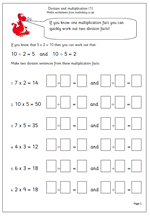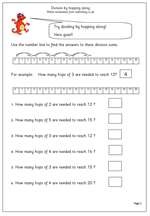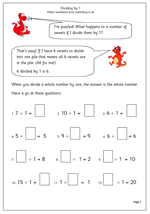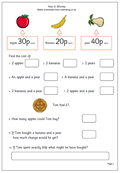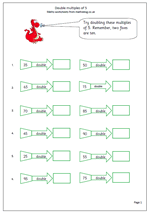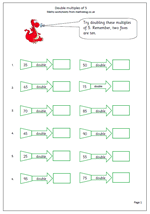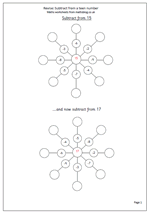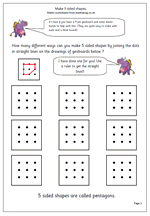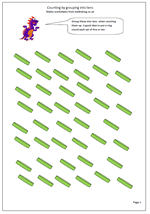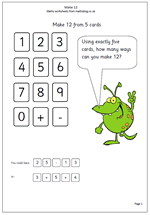It is important to show children the relationship between multiplication and division as this makes division so much easier.
Here we have a page which shows that if you know one multiplication fact you can quickly work out two division facts.
For example:
if you know that 5 times 7 is 35
then you can instantly work out that
35 divided by 7 is 5 and
35 divided by 5 is 7.
Knowing that you can do this greatly increases speed of calculating and it is speed, as well as accuracy that we are looking for. This page can be found in ourYear 3 Calculations section.
